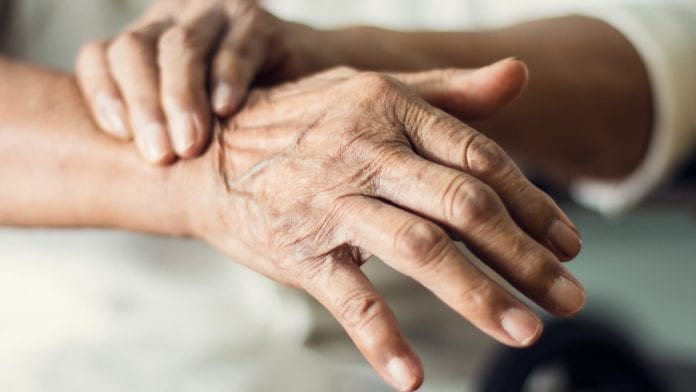
Researchers have developed a machine learning model that allows robots to safely treat the hand tremors associated with neurodegenerative diseases.
The research published in Scientific Reports, reveals that research teams from New York University Tandon School of Engineering, USA and University of Western Ontario (UWO), Canada have tapped artificial intelligence techniques to build an algorithmic model that will make the robots more accurate, faster, and safer when battling hand tremors related to neurodegenerative diseases.
Controlling involuntary movements
There are over one million people across the globe who have been diagnosed with Parkinson’s disease, just one of the neurodegenerative diseases that can cause hand tremors.
The international team of researchers have used the most robust techniques on their model – which is now ready to deploy – to ensure that they combat the pathological hand tremors which are symptomatic of the common and debilitating motor problems affecting many ageing adults.
The PHTNet approach
Although there is sophisticated technology such as wearable exoskeleton suits and neurorehabilitation robots which can help people offset some of the involuntary movements, when it comes to predicting involuntary movements in real time, these robots need to be precise. If the machine lags by just 10 to 20 milliseconds this can prevent effective compensation by the machine and in some cases even cause a potential risk to safety.
However, researchers have used a big data set, collected at the London (Ontario) Movement Disorders Centre, to create their innovative machine learning model named PHTNet, for “Pathological Hand Tremors using Recurrent Neural Networks”.
Extracting predictive information
The researchers used small sensors to analyse the hand motions of 81 patients in their 60s and 70s. They then applied a novel data-driven deep neural network modelling technique to extract predictive information applicable to all patients.
In the research paper, they revealed that the artificial intelligence model and training and reports a 95% confidence rate over 24,300 samples.
Creating a model that works for everyone
The co-author, S. Farokh Atashzar, who is now an NYU Tandon assistant professor and who began exploring the use of robots coupled with artificial intelligence while conducting doctoral and post-doctoral research in Canada, explained that: “Our model is already at the ready-to-use stage, available to neurologists, researchers, and assistive technology developers,
“It requires substantial computational power, so we plan to develop a low-power, cloud-computing approach that will allow wearable robots and exoskeletons to operate in patients’ homes. We also hope to develop models that require less computational power and add other biological factors to the inputs.”
Do you want the latest news and updates from Health Europa? Click here to subscribe to all the latest updates, and stay connected with us here.









